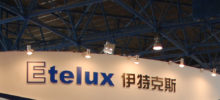Modern laboratories and processing centers often need to use high-purity gases and high-purity materials for more complex modern precision processing and production. For example, some large-scale analysis instruments can complete ultra-low element content analysis, and some multi-receiving mass spectrometers can complete high-precision ratio analysis of low-content elements, such as lead, strontium, neodymium, and hafnium equivalent element composition analysis.
The analysis of these elements and isotopes requires a low instrument blank, that is, the background of the corresponding elements and isotopes contained in the various reagents, water, gas and other media used in the instrument analysis is much lower than the given elements and isotopes in the sample. The usual method is to select purification, filtration and other methods to achieve a lower blank background, and the conventional filtration uses activated carbon.
Regardless of the adsorption capacity, the filtration technology including activated carbon always needs to be regenerated and activated after the adsorption is saturated. If the regenerated medium is filled with columns or other subsequent treatments in an exposed air environment, it will undoubtedly cause the adsorption of activated carbon and others. The medium directly touches the atmosphere and absorbs impurities in the air, and then affects its practical communication function after reloading into the system.
The experimental operations can be completed in the glove box, which is currently the usual glove box. The purpose is to overcome the high cost of the existing glove box in order to maintain a constant pressure and high purity gas environment.


























